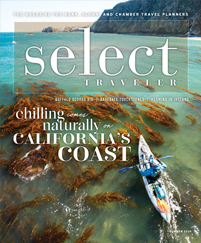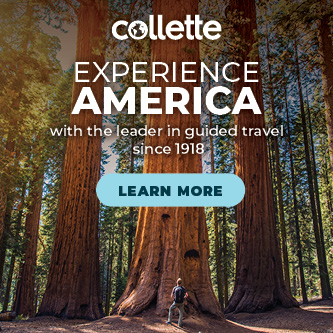The cities of the South are brimming with exciting travel experiences.
Major metropolitan destinations throughout the South have cultural, historical and culinary attractions to rival those in any other part of the country. Group travelers interested in the Civil War, the civil rights movement, early American history and some of the best group-friendly attractions in the country should make a point of visiting these six large Southern cities.
Raleigh, North Carolina
Raleigh is known as the Smithsonian of the South because of its abundance of world-class museums, including the North Carolina Museum of Art, the North Carolina Museum of Natural Sciences, the North Carolina Museum of History and the North Carolina Sports Hall of Fame.
Visitors to the City of Raleigh Museum can take a Historic Fayetteville Street walking tour, which highlights the architecture, social history, people and places that make up Raleigh’s Fayetteville Street district and historic landmarks. The Historic Raleigh Trolley is a narrated tour that runs March through December to Mordecai Historic Park, Bicentennial Plaza, the Joel Lane Museum House, Fayetteville Street and the City Market.
Black Main Street is another must-visit. The area was developed in the 1910s and 1920s as an African American commercial district. Groups can learn about the history, see the sidewalk art and visit some of Raleigh’s thriving modern-day Black businesses.
Raleigh has plentiful shopping and more than 1,200 restaurants, including those run by James Beard Award-recognized chefs. Groups can take gourmet food and drink tours of the city through Taste Carolina. Beer lovers must visit the Raleigh Beer Garden, a Guinness World Record holder for most beer on tap and largest selection of beer on draught in the world.
Birmingham, Alabama
Although it’s a large urban destination, many people don’t realize that Birmingham has beautiful natural surroundings. The city sits at the foothills of the Appalachian Mountains and offers plenty of walking trails and green spaces. Pair the area’s natural beauty with its temperate year-round climate, robust music scene and famous barbecue for a wonderful group destination.
No visit to Birmingham would be complete without sampling some of its civil rights history. The first stop should be at the Civil Rights Institute, where groups can see artifacts from the civil rights movement, including the door from the jail cell in Birmingham Jail where Martin Luther King Jr. was incarcerated, and read about and listen to first-person accounts from those times. The self-guided multimedia experience lasts about an hour and a half.
Across the street, groups can take a cellphone tour of Kelly Ingram Park, which has numerous civil rights monuments. The park is also the start of the Birmingham Civil Rights Heritage Trail, a list of markers that goes through the city’s civil rights district.
The 16th Street Baptist Church became a flashpoint of the civil rights movement after it was bombed by white supremacists in 1963, killing four young Black girls. Groups can take a guided tour of the church and museum to learn of the events that led to the bombing.
Memphis, Tennessee
Called the Birthplace of Rock ’n’ Roll, Memphis has become a pilgrimage site for fans of Elvis Presley, rock ’n’ roll and the blues. The city is home to Presley’s 14-acre estate, Graceland, and the Elvis Presley’s Memphis entertainment complex, which is across the street from the famous singer’s home. The complex features Presley’s vintage collection of automobiles and airplanes; Elvis: The Entertainer Career Museum; and two restaurants named after his parents.
Sun Studio is where rock was born when pioneering music producer Sam Phillips took a risk by blending musical styles and is a must-see Memphis destination. B.B. King and Howlin’ Wolf recorded there before Elvis, Jerry Lee Lewis and Johnny Cash. The Stax Museum of American Soul Music is close to downtown in an area known as Soulsville USA. It is the site of the original Stax Records and houses more than 2,000 artifacts that celebrate the musical contributions of some of the greatest artists in the world. Beale Street is home to several blues clubs where groups can relax and enjoy the music.
Groups can schedule a scenic riverboat cruise or a guided kayaking adventure on the Mississippi River, take a docent- or staff-led tour of the exhibitions and collections at the Dixon Gallery and Gardens or visit the Memphis Brooks Museum of Art.
Tallahassee, Florida
Situated within the Florida panhandle, Tallahassee is not what most visitors expect for a capital city. Tallahassee is surrounded by rolling hills and stately live oaks. The city and surrounding area has over 700 miles of hiking, biking, paddling and equestrian trails to enjoy. More adventurous groups will want to visit the Tallahassee Museum, where they can zoom through the city’s dense canopy and cypress swamp on the museum’s Tree-to-Tree Adventure zip line and obstacle course. Wakulla Springs is home to the largest and deepest freshwater springs in the world, ringed by an ancient cypress swamp. Groups can take a guided riverboat tour of the springs, catching a glimpse of alligators, turtles, manatees, deer and birds.
History lovers will want to explore the Florida Historic Capitol Museum, Tallahassee’s Capitol Complex and Florida’s History Museum. The city is also home to the Meek-Eaton Black Archives, Research Center and Museum at Florida A&M University, which has one of the largest collections of African American artifacts in the Southeast.
The Bradfordville Blues Club is Florida’s first site on the Mississippi Blues Trail. It is a famous one-room juke joint that showcases different blues acts every Friday and Saturday evening. Sports fans will enjoy the Seminole Experience, a 90-minute walking tour through some of Florida State University’s most historic athletic complexes.
Atlanta
Atlanta is a favorite destination of group travelers because of its world-class attractions and its deep civil rights history. The Georgia Aquarium showcases more animals than any other aquarium in the country. Groups can book a Behind the Seas tour, which offers a backstage look at the aquarium’s most popular exhibits.
Nearby, World of Coca-Cola is a favorite of group travelers because it combines science, history, a 3-D theater, a Coca-Cola store and a tasting room where people can sample Coke products from around the world.
Another popular attraction, Centennial Olympic Park, was built as part of the 1996 Olympic Games. Groups can take an audio tour of the park, exploring its history, amazing fountains, live music and food. The National Center for Civil and Human Rights and Martin Luther King Jr. National Historical Park are a big draw for anyone interested in the civil rights movement. Zoo Atlanta, the Chick-fil-A College Football Hall of Fame and the Atlanta Botanical Garden offer groups a chance to get away from the hustle and bustle of the city.
The Fernbank Museum of Natural History is a mixture of science and history museum, with indoor and outdoor exhibits. Visitors can see re-creations of the tallest dinosaurs in the world, watch a movie at the Giant Screen Theater or go outside and enjoy the WildWoods and Fernbank Forest, 75 acres of outdoor exhibits, walking trails, a canopy walk and native wildlife.
Charleston, South Carolina
Charleston is considered one of the most European cities in the country. Founded in 1670, it retains much of its historic architecture and charm. It still has a vibrant historic district, with 3,800 buildings on the national historic register, but it is also a culinary destination, offering a rich blend of cuisine influenced by the area’s Native America and European residents and enslaved Africans.
The city is a major golf and beach destination. Groups can take a harbor or dining cruise or visit one of the area’s many plantations. The Boone Hall Plantation is famous for its Avenue of Oaks. Groups can take a covered wagon tour of the property, take a guided house tour, learn about Black history in the property’s nine original slave dwellings and watch live presentations about Gullah culture.
Fort Sumter and Fort Moultrie National Historical Park is a top attraction in the area. Guests learn about Fort Sumter, where the first shots of the Civil War were fired, at the Fort Sumter Visitor Education Center at Liberty Square. The building is on the site of Gadsden’s Wharf, where thousands of enslaved Africans were brought to the U.S.
Groups can also take a ferry out to the fort and take a guided tour of Fort Moultrie, which served as Charleston Harbor’s first line of defense against disease and foreign invasion.









